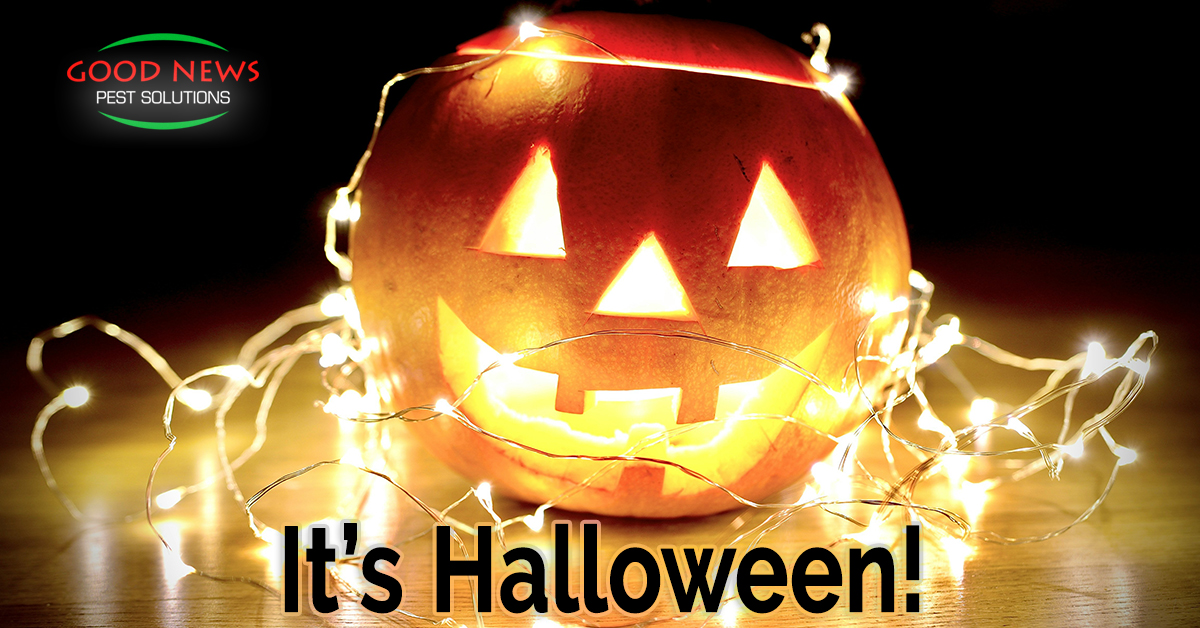
It’s Halloween!
All across America tonight, millions of children will go door to door or car trunk to car trunk dressed in various costumes, asking for and getting candy and other snacks. The night is promoted as a time of fun and frivolity, harvest, and community.
Safe to say, that’s a long way from the purported origins of Halloween.
Ancient Myths and Beliefs
The oldest stories that appear to tie to Halloween involve the day the ancient Celts of Ireland, France, and England referred to as Samhain. In their estimation, it was the beginning of winter and a new year. This was a time when it was believed that the barrier between the worlds of the dead and the living was so thin, you could pass from one side to another.
There aren’t a lot of stories about the living ending up in the land of the dead (unless you count Pixar’s Coco), but the Celts and Druids believed that the restless spirits of the dead would come to the our side and damage crops, whisper predictions in willing ears, and wreak a little mayhem on the living.
Bonfires were built and sacrifices made to various pagan gods in the hope that winter would be mild. Experts say this was a combination of two different holidays from across the globe brought together by the Roman Empire in the years shortly after Jesus lived and died.
Roaming Roman Roads
One of the other things Rome eventually brought to the world was Christianity. In 609 AD, Pope Boniface IV created a new holiday to honor those saints who had passed on to their heavenly reward, sacrificing themselves for the faith. All Martyr’s Day eventually honored all the dead saints of the church and was celebrated on November 1, or All Saint’s Day.
In an effort to gain more converts, the church in Europe combined and attempted to subvert Samhain, making it the Christian celebration of All Saint’s Eve. In the English of the day, that was pronounced, Alholowmesse, which would eventually become All Hallow’s Eve, or Hall’o’ween.
Despite the church’s best efforts, it was still a celebration of some elements of the pagan festivals mixed with church. Bonfires were sacred – but signified the end of the harvest and community gathering, rather than sacrifices and seeking the wisdom of the dead.
Coming to America
By the time our nation saw its first European settlers, the Protestant Reformation had split the church and the “New World” of the American continent was seen as a place of religious freedom and variety.
The Puritans, some of the strictest of the Christian sects, outlawed anything to do with Halloween in most of New England (they forbade Christmas celebrations as well). But the more Southern colonies did bring some of their German and English Halloween practices and even merged them with those of the Native Americans they met there.
Play parties would celebrate the harvest while neighbors danced, sang, and shared stories of those who had passed on. Most of the stories were just remembering those who had passed, but a few were darker, ghost stories and hauntings told around a campfire.
Lighting the Jack O Lantern
But it wasn’t until the 1840s, when the Great Hunger struck Ireland (aka the Great Potato Famine), that Halloween came to the fledgling United States. During that time, nearly one third of all immigrants coming to the US were Irish and another large component was German. Those two groups brought their versions of Halloween to our shores.
That’s when Trick or Treating came about, as well as the incorporation of costumes.
One other element was brought over from Ireland – the carving and lighting of pumpkins and other gourds to ward off evil spirits. The original myth involved a specific spirit – Stingy Jack, who made a deal with the devil and now haunted the community. Supposedly, after he died he could not enter Heaven or Hell, so he roams around Earth with a hollowed out turnip light to lead him.
In some instances, Stingy Jack was also tied to Jack the Ripper and may have been the inspiration for Washington Irving’s Headless Horseman as well as Jack Skellington in The Nightmare Before Christmas.
Today, people just like to carve fun shapes and designs. You’re as apt to see a Mickey Mouse or Death Star pumpkin as you are a traditional Jack-o-Lantern.
Communities Take Over
By the 1950s, community and government leaders had effectively removed the frightening and grotesque and transformed Halloween into community harvest festivals and trick or treating. Today, about one third of all candy bought in the United States is to be given away on October 31.
While the practice of trick or treating continues, it’s not considered as safe as it was in the 1950s or even 70s. More often than not, parents will accompany their children around the neighborhood. Or they’ll opt to go to a church offering a trunk ‘n treat or harvest festival as a safer alternative. Either way, the parents examine their children’s haul to be sure the contents are safe.
For adults without kids, it’s often a time to host a fun, costumed dinner party. Food and wine flow and everyone enjoys the company while trying to guess who’s under the mask, or who the costume is supposed to represent.
If you happen to host one of these parties, you’ll want to make time the following day to clean up. Inevitably there are spills, mishaps, and crumbs scattered. If you don’t clear them up right away, you may find your home with even scarier guests – cockroaches, or our Florida favorite, Palmetto Bugs. If that happens, we won’t hesitate to help. We’ll just send one of our talented technicians to provide our top notch Go Green Perimeter Plus service and send those creepy crawlies scurrying to the outdoors. For more details, or to preplan your first home visit, please give us a call!
« Back to Blog
Proudly Serving
Sun City Center, Ruskin, Palmetto, Parrish, Ellenton, Bradenton, Anna Maria, Holmes Beach, Bradenton Beach, Longboat Key, Lakewood Ranch, University Park, Myakka City, Sarasota, Siesta Key, Osprey, Nokomis, Casey Key, Venice, Englewood, North Port, Port Charlotte, Punta Gorda, Arcadia
Things You Can Do
Pay Your Bill Online
Leave Us a Review
Request a Free* Termite Inspection
Stop Mosquito Bites
Get Rid of Rodents
Get a Termite Damage Warranty
Get Pest Control for Your Attic
Get Pest Control for Your Business Request Prayer
Corporate Address
1080 Enterprise Court, Ste A
North Venice, FL 34275
Call Now: (941) 412-9610
Text: (941) 412-9610
Fax: (941) 412-0080
